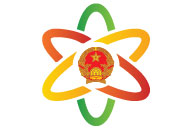
News
Revised Circular 38 specifies the responsibilities of the concerned parties in the supervision of goods
Summary
Updated on : 05-06-2018

According to the drafting committee, the current regulations have not specifically guided the responsibility of coordination and information exchange between port depot and warehouse operators with Customs authority.
The current regulations do not specify that when goods are brought into the port, stored and taken out of Customs supervision area, the port, depot and warehouse operators must check, update and send what information to the Customs; and what information the Customs office must provide to the operators, or when the system encounters problems, etc.
The current regulations do not specify specialized cases (transshipment, transit, change of export border gates, partial export goods, returned goods to inland, failure to declaration registration, etc).
Accordingly, The Circular amending and supplementing Circular No. 38/2015 / TT-BTC amends Article 52 on Customs supervision of import goods across a supervision area which has connected with the system; At the same time adding Article 52a on supervision of export goods across the supervision area which has connected with the system; Article 52b on Customs supervision of other cases; Article 52c on Customs supervision of import and export goods across the supervision area which has not connected with the system; Article 52d on the suspension to take goods across the customs supervision area; and Article 52đ on coordination and information exchange or when the system encounters problems
The important point to be amended and supplemented in the Circular is that when implementing to receive goods, the customs declarant does not have to present paper documents to Customs officers to check and certify the eligibility of goods across the supervision area.
Concurrently, concretizing the responsibilities of the parties (the declarants, port, depot and warehouse operators and Customs authority) in each stage: Before taking goods to the supervision area, and during the loading and unloading of goods to take them to supervision; during the storing of goods at the supervision area; and after taking goods out of the supervision area.
Regarding this issue, the General Department of Customs is currently implementing an automated system for Customs supervision at some local Customs units (Hai Phong, Hanoi, Ho Chi Minh City, Ba Ria-Vung Tau) and have brought efficiency in the management, supervision of goods in and out of warehouses, ports and depots.
The modern management method helps the management agencies monitor strictly and timely the movement, change and status of goods from arrival to departure out of ports depots and warehouse, as well as transportation among locations under Customs supervision areas. At the same time, shortening the time and costs of enterprises, improving the compliance of enterprises, preventing fraud and smuggling. By applying the automated system for customs supervision, importers and exporters can minimize paper dossiers submitted to shipping companies as well as Customs authority. As a result, reducing the burden of declaration and speeding up the clearance process.
Source: CustomsNews
Most Recent News
| Title | Category | Created On |
|---|---|---|
| Lạng Sơn: Phát triển các loại hình dịch vụ qua biên giới gắn với kinh tế cửa khẩu | News | 2024-04-24 13:56:59 |
| Videos: Xuất, nhập khẩu hàng hóa qua kho hàng không kéo dài đem lại nhiều lợi thế cho doanh nghiệp | News | 2024-04-23 10:33:56 |
| Videos: Việt Nam mong muốn thúc đẩy hợp tác hải quan ASEAN | News | 2024-04-12 06:51:54 |
| 2 trường hợp cấp lại Giấy phép thành lập Văn phòng đại diện của tổ chức xúc tiến thương mại nước ngoài | News | 2024-02-19 14:34:36 |
| Đơn giản hóa một số thủ tục về kinh doanh vận chuyển hàng không | News | 2024-02-19 14:30:39 |
Search All News
|
A Quick Intro |
Search Trade Information
|
|
|
|
|
|
|
|
|
|
|
|
|
|
Feature Information
|
|
|
|
|
|
|
|
|
|
|
Information & Articles
|
|
|
|
|
|
|
|
|
|
|
|
Contact Us! If you cannot find what you require in this website please feel free to contact us. Click here to send us a message >>>
|